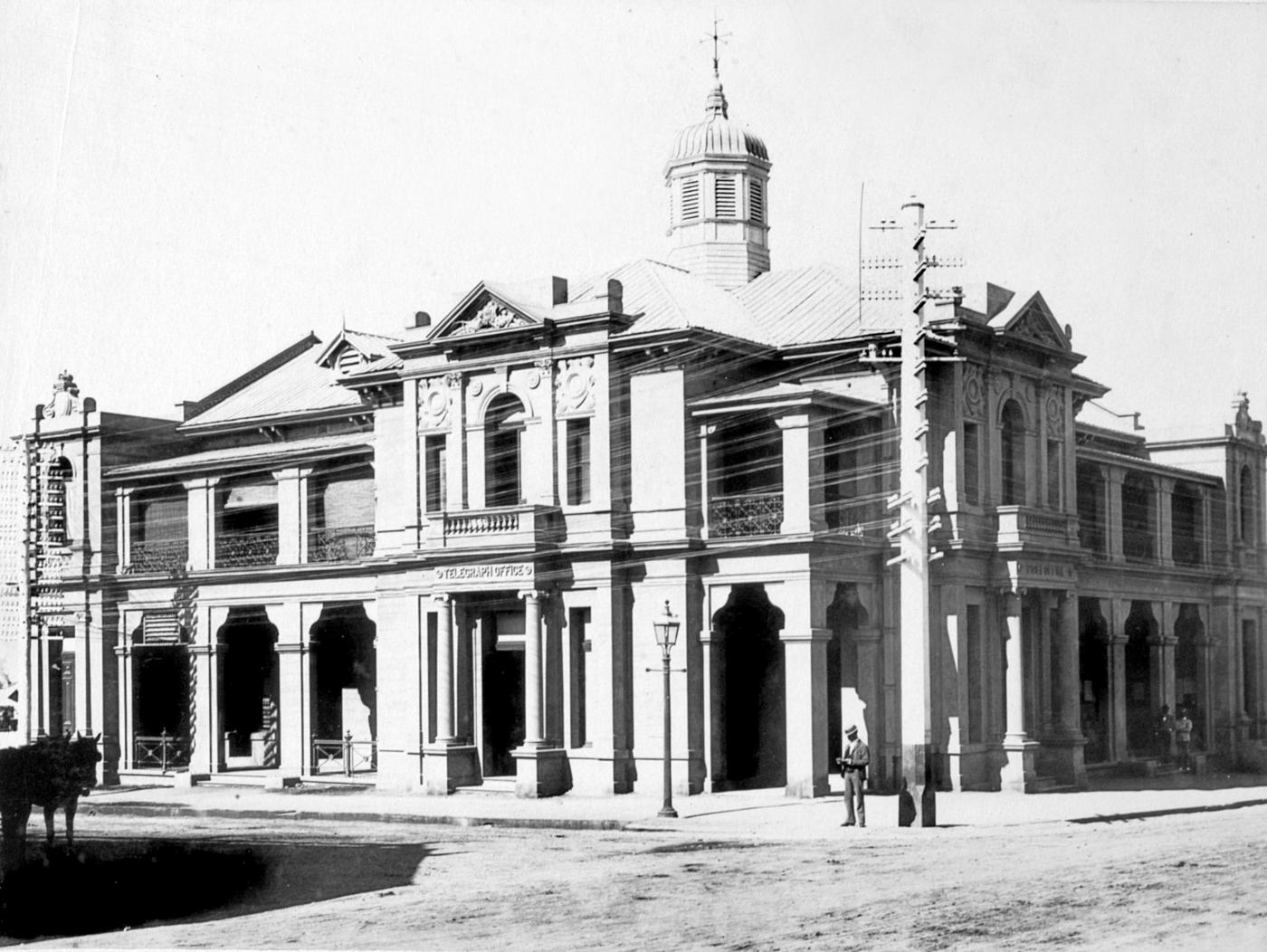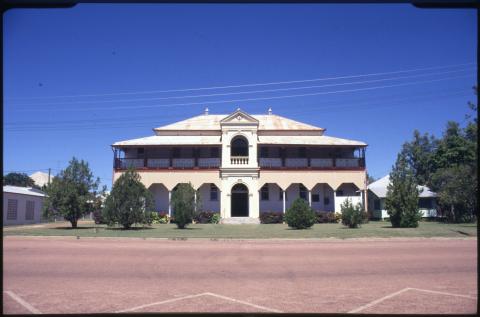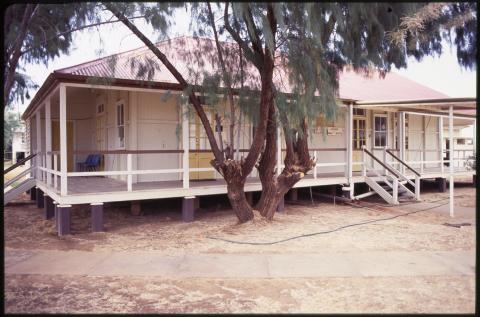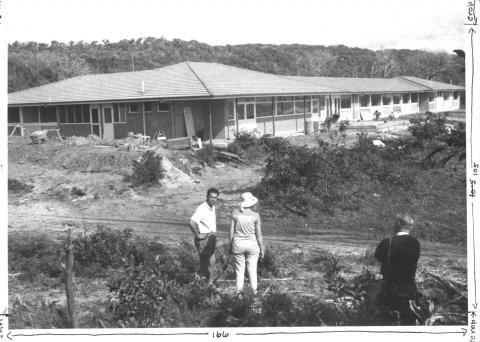
- News of the day
-
Telegraph, Monday 25 April 1892, page 2
Charters Towers Post Office.
Postal Deficiencies on the Goldfield.
Our Charters Towers correspondent writes as follows : The local chamber of commerce, the Press, and the public generally are considerably exercised in connection with the existing irregular postal arrangements, so far as this district is concerned. At the Easter closing of Parliament Mr. Sayers alluded to the subject, but in a very mild manner, knowing as he does how general and true are the complaints. Departmental economy is commendable, but parsimony in postal arrangements affects commerce, and what is thought to be saved by taking off the salaries of one or two letter carriers proves a larger loss in the revenue. The due delivery of correspondence and post-paid newspapers should be religiously carried out, but for the due performance of the operation sufficient hands must be employed. As a rule the Week is delivered on Thursday or Friday to those who have no post office boxes, although this week it was only delivered on Saturday morning. The want of another letter carrier is again shown by the fact that the afternoon delivery — the moil arriving at 11.30 a.m. — is only delivered to a certain portion of the residents of the principal street, and while the hospital has its afternoon delivery the block of business houses opposite is compelled to wait till the following morning because the one carrier has to deliver the early morning’s mall in certain back streets, so that the latter are also seriously prejudiced. Apart from local inconveniences, the people urge that as Charters Towers is an extensive and important place with a daily increasing population, contributing largely to the revenue, and, in fact, representing a material quota of the riches of Queensland, arrangements should be mado for the earlier reception of its European and southern mails, but especially the former. Wise heads here have shown the feasibleness of making up a separate bag for this goldfield, but the postal authorities cannot see it.
- Background
-
A two storey masonry building with public areas on the ground floor and the original two flats incorporated on the upper level now connected to working space.
The post office is located on a prominent corner site to Gill Street and Bow Street, a block back from the main road in Deane Street. This places it in the heart of Charters Towers’ conservation area, a mixture of buildings from the late Victorian and Federation periods, including the former DS General Store at 18 Gill Street, of c. 1900, possibly Charters Towers’ best-known building, just opposite.
The first form of the Post Office was as a symmetrical verandahed building facing Gill Street, with a cast-iron double-storey verandah, deep latticework friezes and a hipped roof clad in corrugated galvanised iron. In the manner of Queensland stump houses, the upper verandah was centred compositionally with a pediment, and balustraded with cast iron lace. The three chimneys were stuccoed Italianate in detail, with large moulded caps. The central structure at the roof top is a lantern. The symmetrical front is then backed by a long spine of smaller rooms linked by an L-shaped verandah. The apartment windows on the first floor were French full-height paired doors, and the lower windows were broad double hung sashes. The building was, arguably, indistinguishable from any number of pub designs, such as those at nearby Ravenswood.
The 1892-1898 alterations made this elevation asymmetrical, replacing the original central door with an elongated porch area to the right side, and a large corner tower. These changes reflect aspects of the (then) new Baroque Revivalism just appearing in Britain. It is not clear from the drawings whether the original front door had an arched top, but it gained one in these alterations, having a large thermal fanlight over a broad three-part setting of door and flanking hall windows. Next to that came the new porch, treated as a two-stepped breakfront with stuccoed flanking piers and paired Corinthian columns at the centre bay. This arrangement framed a central door and two tall flanking casements on the ground floor, with 1:2 ‘Norman Shaw’ light divisions; on the upper floor an arched central window with paired casement was set between two tall flanking windows with glazed roundels overhead, resembling a Serlian arch or transformed triumphal arch. The central window is also fronted by a waisted balustrade framing a balconette.
The vigour of this breakfront largely submerged the former elevation, which was masked further by the replacement of its cast iron columns with a set of astylar pilasters backed by piers, and topped with scroll consoles supporting the upper verandah. This verandah floor was profiled by a frieze running across through the breakfront and then on around the base of the clock tower. The roof was converted to a transverse gable form with the breakfront across it, balanced asymmetrically by a gabled dormer vent. The largest roof feature, though, was the new lantern, an octagonal, heavily layered design with an ogival metal-clad roof and weather-vane finial. A gabled parapet terminated the roof at the west end, and below that was a bay repeating the central bays on the breakfront and counterbalancing the mass concentrated at the other end of the elevation. The early chimneys appear to have been removed.
The five-storey clock tower of 1898 is separated from the ground floor by a broad, low pediment moulded into the frieze on each elevation. Inside each is the inscription ‘A1898D’, the year of the tower’s completion. Above the first floor is another frieze, this time plain, and a storey of rusticated stuccoed banding, punctuated by a single vent window. Above that comes the clock face storey, completely plain apart from the clock, and above that is the lookout, more Romanesque than Baroque in its flavour, with colonnettes, a roundel balustrade, parapet gables to east and west, and a four-sided metal-clad extruded pyramid spire, patterned in descending chevrons and fronted on the Gill street side by an equilaterally triangular pediment with circular vent.
Courtesy of the Australian Heritage Database
/146.2576274,-20.0759693,7/450x450@2x.png?access_token=pk.eyJ1IjoicXNhLWRpc2NvLXFsZCIsImEiOiJjamJmdTgyZXEyeWNjMnlxZm8xcmtieHgxIn0.lmT9J5tTPKGuuccQgCVSAg)



